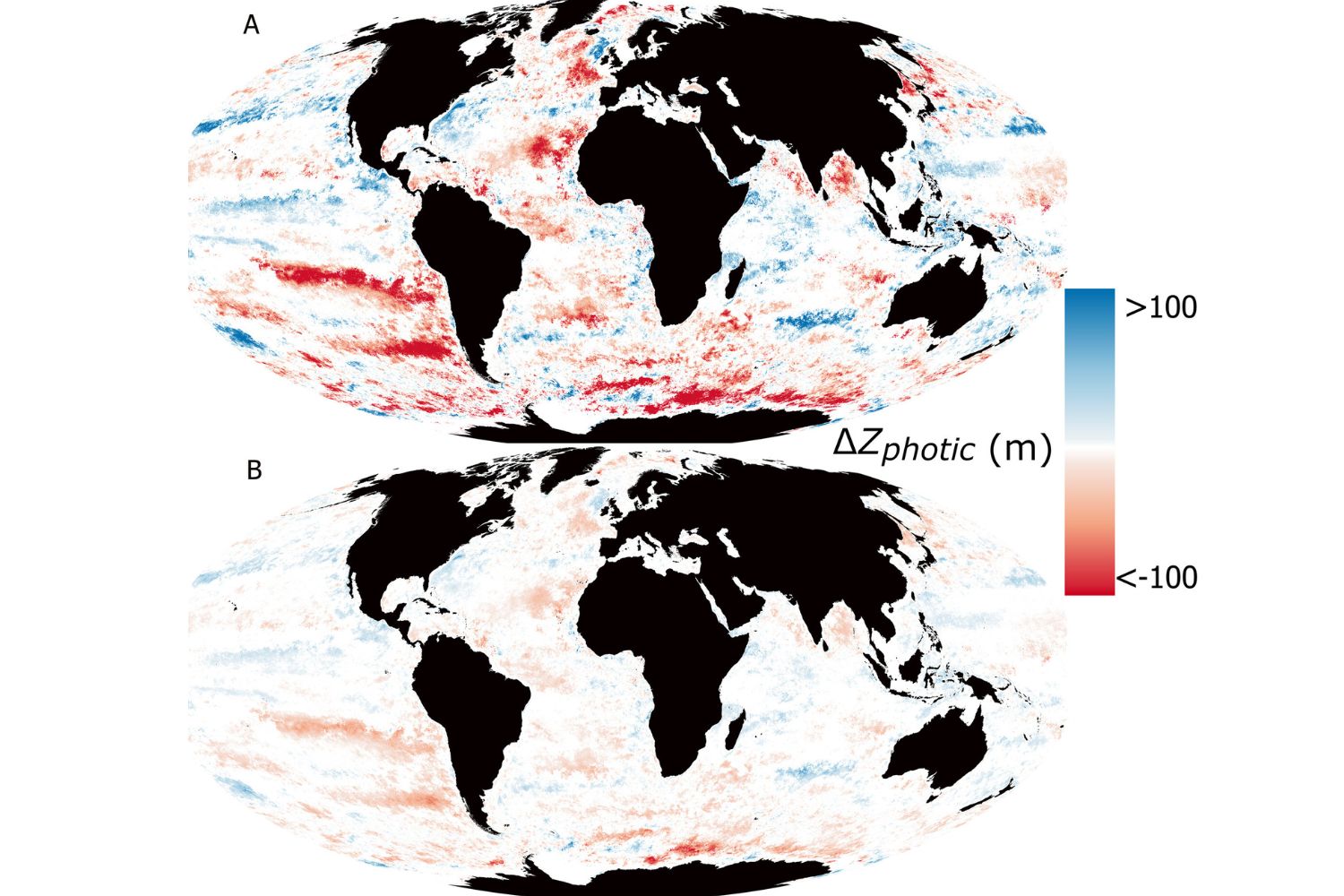New research reveals 21% of global oceans have darkened over 20 years, shrinking marine habitats by up to 328 feet and threatening biodiversity in unprecedented ways

Table of contents
Over the past two decades, a vast portion of our oceans – more than one-fifth of the total surface area – has begun showing a troubling phenomenon: darkening. This discovery, the result of in-depth analysis conducted by researchers at the University of Plymouth and Plymouth Marine Labs based on satellite data and numerical modeling, raises serious questions about the future of marine life and delicate ecological balances.
The heart of ocean life is shrinking
The photic zones of the oceans – areas where sunlight and moonlight penetrate sufficiently to stimulate biological processes – are the beating heart of marine ecosystems. Here, approximately 90% of all oceanic life is concentrated, from phytoplankton photosynthesis, which produces nearly half of the planet’s oxygen and forms the base of almost all marine food webs, to the hunting, mating, and reproduction of countless species. Changes in the optical properties of water that reduce the depth of these zones represent, in effect, a significant loss of habitat.
Data and implications
The study, published in the journal Global Change Biology, analyzed a 20-year time series of the diffuse light attenuation coefficient. The results are stark: between 2003 and 2022, oceanic darkening increased across 75,341,181 km² (29,088,500 square miles), or 21% of the global ocean. This increase in the attenuation coefficient translates to a reduction in the depth of photic zones. Specifically:
- In 32,449,129 km² (12,528,700 square miles) – 9% of the global ocean – the depth of the photic zone has been reduced by more than 50 meters (164 feet).
- In 9,392,219 km² (3,626,400 square miles) – 2.6% of the global ocean – the reduction has exceeded 100 meters (328 feet).
It’s noteworthy that darkening is not a phenomenon confined to coastal regions alone, often associated with pollution and nutrient runoff. As Thomas Davies, associate professor of marine conservation at the University of Plymouth and co-author of the study, told The Guardian: “the growing light attenuation is not limited to coastal areas, but is also widespread in the major oceans, particularly in polar regions, the northeastern Atlantic Ocean, and the northwestern Pacific Ocean.”

@Global Change Biology
“Darkening of the Global Ocean”
The consequences of this reduced light penetration are potentially severe. Marine organisms that rely on light for a vast range of vital functions – from hunting to mating, from reproduction to photosynthesis – find themselves forced to live in an increasingly restricted space.
Tim Smyth, head of marine biogeochemistry and observations at Plymouth Marine Laboratory, explained: “If the photic zone is shrinking by about 50 meters in vast areas of the ocean, animals that need light will be forced to move closer to the surface where they will have to compete for food and other resources they need.” This crowding can alter marine food webs, modify species distribution, and weaken the ocean’s ability to sustain biodiversity and regulate climate.
Causes and uncertainties
The causes of this global darkening are complex and likely multifactorial. In coastal regions, nutrient loading, sediment runoff, and plankton blooms are among the factors contributing to increased light attenuation. Regarding the open ocean, researchers suggest that surface ocean warming and changes in oceanic circulation patterns, linked to climate change, may play a significant role.
Davies emphasized: “Areas where major changes in ocean circulation occur, or ocean warming caused by climate change, seem to be darkening, like the Antarctic Ocean and up the Gulf Stream beyond Greenland.” However, the complexity of interactions between these region-specific factors makes complete quantification of the causes a significant undertaking.
It’s important to consider that, the study authors explain, a 20-year period might not be sufficient to completely rule out the possibility that these trends reflect natural multidecadal variability. Nevertheless, the scale of photic zone depth losses over the past two decades is such as to warrant urgent further investigation.
Not just darkness: some areas getting brighter
Despite the general darkening trend, the study also found that approximately 10% of the ocean – equivalent to 37 million km² (14.3 million square miles) – has become brighter over the past 20 years. One example is a large area off the western coast of Ireland that has shown increased brightness. This variability suggests that the processes at work are dynamic and complex, with areas responding in different ways to environmental changes.
Looking to the future
The implications of ocean darkening for marine ecology and the ecosystem services provided by surface oceans are currently unknown, but likely severe. Oliver Zielinski, director of the Leibniz Institute for Baltic Sea Research, has called the darkening of vast oceanic areas a “worrying trend,” emphasizing how such changes can disrupt marine food webs and the ocean’s ability to sustain biodiversity and regulate climate.
Understanding the photosensitivity of a greater number of marine species is fundamental to estimating the real impact of ocean darkening. Without this basic knowledge, it will be difficult to understand the scope of ecosystem consequences. The scientific evidence of an ocean darkening on vast scales lays the groundwork for deeper and more targeted analysis of its concrete impacts, which could affect marine productivity and our planet’s ability to sustain life.
